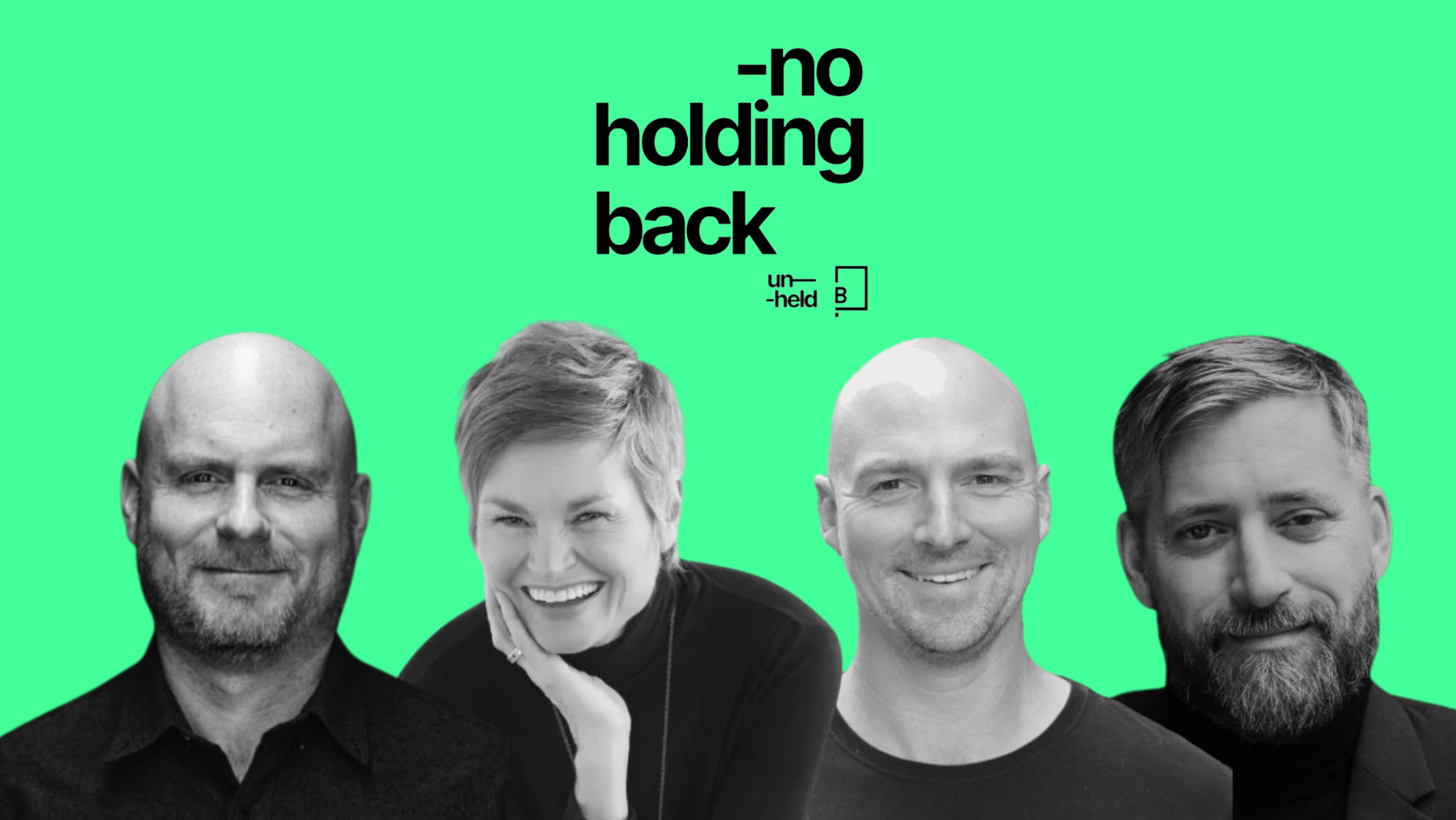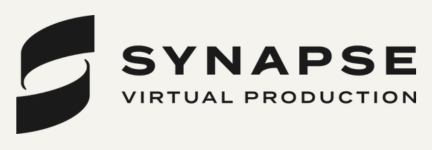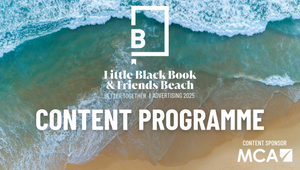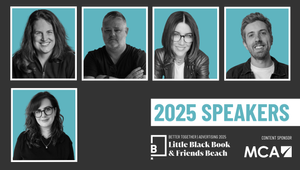
No Holding Back: Tastemaking, Mould-Breaking Indies Are Telling Brands, “We Do Not Work For You. We Work Together”

Independent agencies in markets around the world are spotting and cracking open niches, doubling down on their role as tastemakers, and experimenting with pricing models to correctly calculate the value of a brand-building idea.
There are also founders like John Kaplan who simply refuse to preserve the standard client-vendor dichotomy between advertising agencies and brands: “We do not work for you. We work together.”
John founded Superconnector Studios in 2023 with Jae Goodman. He’d come from a career producing game shows and reality TV and had seen the rise of brands’ involvement in the shows, before ending up at sports and entertainment agency CAA (Creative Artists Agency). Jae had spent decades agency-side at the likes of Wieden+Kennedy, and 17 years at CAA.
Superconnector fills the gap between brands, talent, and agencies. It has set up a branded entertainment unit, called 22 Montaigne, for luxury conglomerate LVMH; developed Sonrisa Rum in partnership with hip-hop artist Fat Joe, World Series champion Martin Maldonado, and Reggaeton legend Yandel; and pitched TV shows and movies for AB InBev brands like Bud Light and Stella Artois. In exchange for its efforts, the new shop has scored a spot on Fast Company’s Most Innovative Companies list twice in its two years of operation.
John tells LBB the business only works with brands that are “best in class” for their category. And critically, brands that get the nature of a real partnership. “It’s our name on it too.”
Open to Co-Financing, Producer Credit, IP Share
Superconnector is “willing to bank” on a project’s success, “and we're willing to bet on our future.”
“But as long as we're doing it, we're going to have an opinion about it. That’s pretty different from how most agency models work. We really mean it. We're partners. We do not work for you. We work together.”
That attitude is appealing to brands, agencies, celebrities, and entertainment companies – like Netflix and Amazon Prime – because Superconnector is indeed connected, but also agnostic. It has purposefully avoided taking on external investment to avoid conflicts of interest.
“One of the things we wanted to be crystal clear on was that we were 100% objective, and that meant we had to sit outside the system, and we had to have the ability to not be second guessed about what we were recommending.”
John and Jae want to be in business partnerships for the long term. “These are not two week projects. They might be working [for] the next two years together. So you better find out pretty quickly whether you trust them and whether or not they're listening to you.”
It offers consultancy services to CEOs and CMOs, charges modestly for general servicing -- “lower than we ever did in our previous life, because we want to have an opinion and be part of the equation in success” -- and is open to remuneration options for projects and products that span IP ownership and co-financing. For many screen projects, it’s listed as a producer.
“In some cases, we will invest alongside our clients, because we believe in the project,” John says.
“But on the studio business, whether it's 22 Montaigne or Draft Line, or any of the other ones, we really are looking at this not as one-offs. We're in business for a long time, and part of what we preach is patience. The average movie gets made in seven years. 94% of TV shows fail in their first year … which means thinking about a slate mentality.
“We don't believe in brands fully financing anything. We think that, generally speaking, is a bad model, because it typically does one of two things. It either has them fully committing to something that they don't actually know is going to live anywhere, and the result of doing that means that, potentially, the marketplace does not perceive it as a real project.
“So we're very up [for] being part of development and financing part development. We're even up for co-financing things.”
The success of the ‘Barbie’ movie made Superconnector’s conversations with marketers easier; John notes CAA worked with Hasbro and Mattel, and “there were three different rounds of ‘Barbie’ projects while we were there that did not move forward.”
The Greta Gerwig and Margot Robbie-fronted production is proof that “if you have the right people in the right seat to make the right choices, who have a little bit of courage, and also, frankly, taste, you might have a better chance of coming out with something on the other end that will actually be something that can be a hit.”
If The Work is Good, “The Money Figures Itself Out”: The Art of Tastemaking
Anthony Sperduti spends a lot of time thinking about taste. 15 years ago, he co-founded Partners & Spade, which he took complete control of and rebadged to Mythology six years ago. Some things have changed (Mythology used to operate as a half studio, half gallery in New York, hosting exhibitions for salt-crusted watches found at the bottom of the river, or gloves run over by trucks), and some haven’t (it still uses the now-popular hub and spoke model it started with, comprising a small full-time team and project-specific freelancers).
While the agency has grown -- “now we’re roughly 50 people, give or take” -- Anthony has kept the model because “it still produces the best work” for companies like luggage brand Away, eyewear brand Warby Parker, and shoemaker Allbirds.
“There are times when it eats into our profit,” he acknowledges.
“But my long term plan has always been, if the work coming out is good and we keep the clients, and the clients are happy, the money figures itself out. It comes back. And so far, that strategy is held.
“Three quarters of the talented design pool, I would say, are freelance right now. What happened was, at least here [in the US], a lot of the venture-backed companies and the new brands and even the bigger, older brands, they started being comfortable with hiring creatives directly, having more of an in-house [presence and] freelancing some people in. That freelance community not only had agencies to freelance for now, they had clients. So their opportunities quadrupled or 10 times. So it's a lot less scary to freelance.”
The Scratch Collective’s Amy Cheronis has also observed a swell in the availability of quality freelance talent, shaping the business model of the agency she co-founded in 2020.
“You don't have to go to the same old kinds of agencies, you can come to a new model that's going to allow you to come in for a three month project, that can give you Super Bowl-level creatives for a two month sprint, and actually change within a quarter the velocity that's happening at the store for your product.
“The speed of the thing is entirely different, and the access to talent is different, and there's just more people who want to work like that. I used to always have a hard time finding freelance talent, and now, I could fill three Scratches with all the people that I know.”
The talent pool has expanded in other ways too, though, which has forced entrepreneurs like Anthony to consider the value they offer clients in an AI-soaked, increasingly-fragmented media landscape.
While two decades ago free-to-air TV was households’ primary form of entertainment, “now, commercials are one of dozens of ways to be entertained or to keep your attention. The cost of doing them has just skyrocketed. But then there are people in their backyards making videos that are usually 10 times funnier than the thing you just spent a million dollars making.
“Maybe I'm one of 1,000 people 30 years ago that could do it. Now, I'm one of maybe 200,000 people that can do that to varying levels of success. So there's that, and then you throw AI on it.
“Is it that we become a studio of 20 people, but we charge a lot more? Is it that we just work in a luxury space and everything that's mass market is AI generated?”
Hence he's spent more time soul searching recently than when he reimagined the business in 2019.
“The soul searching has been for many, many years [about] our value as an industry, and as our agency, specifically in being able to tastemake, and create things that were hard for most people to pull off.
“You had to have dozens of years of experience to be able to consistently say, 'I'll give you something that you're happy with and that people will pay attention to and like'. That's really shifted. So what are we in the business to do?
“Still understanding strategically where you know a brand should be positioned, how it should market itself, who it should go after, all those things we still do, but how we charge and what we should expect to get paid, and what my team members expect to get paid for. That's all really shifting.”
Those shifts mean marketers no longer need asset-makers in the same way, but need tastemakers more than ever. Even if mass market brands shifted the bulk of their creative production to AI, “there still needs to be someone with experience, with a taste level, to decide between the 1,000 free things, to choose which one of the 1,000 is going to make the most impact on your business.
“I do know, at least in my lifetime, there will always be a premium for human-generated ideas, a spontaneity and a taste level generated by a human, even if a machine could mimic it. That is going to be an aspirational thing, because our worlds are already getting flooded with the artificial.
“My hunch is that those of us that survive are the ones that are going to drift upwards to the brands that are more emotive, that are more aspirational, that command a premium.”
Agencies Claiming Every Capability Is “What’s Broken”
After more than a decade at DDB, followed by another decade at Publicis agencies, Amy decided it was time for a change. Or more accurately, a return to “what I had learned was so important 10 years ago, 15 years prior, which was have those little startup brands, have a not-for-profit, have a passion project, that new shoe that got everybody really excited, so that you could continue to sell the same old sugar cereal.”
“I was sitting inside of the big holding company with a big title that didn't mean a lot,” she recalls, “and we were just on the flywheel trying to consistently make the big client scopes bigger.
“The holding company model doesn't really allow for that kind of kinetic creative assignment. And as I thought about how I wanted to spend my time and so many people around me who were leaving the big holding company, I thought, there must be a way for us to make the money work and get to work on what we wanted.”
Enter: The Scratch Collective, which works across communications (influencer marketing, PR, executive visibility), consulting, and marketing (advertising and brand strategy, social, website work). The list of capabilities is long because it was set up to service start-ups, which need their marketing budgets to stretch further, and are more focused on surviving the quarter than creating generational loyalty.
“We just helped a yogurt brand at the end of last quarter. It was like sell or you won't be on the shelves. And what we did in nine weeks would have taken us nine months in the old world.”
The model now offers start-ups and blue-chip brands alike -- start-ups make up just 30-40% of business now; “we just won a Clio in partnership with Kimberly Clark” -- top talent at a lower cost. Amy’s work can involve acting as a fractional CMO, defining the value proposition, working on an investor deck, or developing a PR strategy, but she notes Scratch has no interest in trying to be all things to all people.
“Some of what's broken in the marketing world is everybody's so scared that you have to hold onto everything, and you've got to tell everybody that you have this capability when you don't.”
Mythology is a “rarity” in the commercial creativity sector, Anthony says, because its combined expertise is still unusual, 15 years on: strategy, creative, design, branding, and retail. “We might be the only ones with the level of advertising we do and the level of retail and the level of brand.”
“We have built over 90 brands with founders from the ground up, and we function as a typical agency would for very large clients like Target, and we also design retail stores.
“Those things kind of sound disparate, but the way we see brand, and the way we always got the assignments we got excited about, [was when a client] wants to fundamentally define who they are and then find the right creative expression of that strategy and foundation. We were set up to do that, and are still set up to do that.”
There’s been a trend away from big retail fit-outs towards activations that effectively generate social “fodder” without “paying for eyeballs and influencers,” giving brands a real shot at shaping algorithms and culture. Luggage business, Away, for instance, blew up during a “golden era” for D2C brands and became a trendsetter. Away and other Mythology clients like Peloton have found cultural success by tapping into “a shared belief, or a shared set of values or sensibilities or aesthetic … That's why they've gotten big.”
John’s Superconnected “play[s] at the biggest level with the people who are really defining pop culture”, working with dozens of “Oscar-winning, Academy Award-winning directors, producers, or writers, and Emmy Award-winning creators.”
That pedigree of talent means simply piggybacking off of cultural trends is too small a goal; the “north star is we're trying to get people to consider these things [branded entertainment] the same way that they consider anything else that they're looking for on Netflix or Amazon or Apple.”
‘Barbie’ or the recent WhatsApp-backed Netflix doco about F1, ‘The Seat’, are adding cultural value to streaming platforms in the same way the likes of Away or Glossier enriched Instagram feeds almost a decade ago. Anthony notes Gen Z is wary of brands claiming to be the category’s ‘it’ brand, preferring personalisation and self-expression over bandwagoning.
Additionally, clients’ expectations have multiplied, and it’s harder to find and exploit a gap in the market. That’s also why the ratio of Mythology’s permanent versus freelance staff is changing.
Anthony says, “I probably have more of a need for full time than I do for freelance at the moment, because there are so many overlapping projects and they're just a lot more complex in general than they were 10, 15, years ago.
“I'm looking more to build talent and to keep talent.”
HoldCo Model “Doesn’t Make Any Sense To Me”
On the other side of the world, one-year-old Australian indie Rick Barry (named after the NBA Hall of Famer) is building project teams that feature traditional advertising freelancers, creatives from fields like music and fashion, and media practitioners.
“We’re loving the newfound freedom to experiment with new methods and models,” says co-founder Hugh Munro, who left The Monkeys (now Droga5) as CSO to set up a shop with ex-BMF CCO Alex Derwin.
“We get most excited when we’re bringing marketers and makers closer together, so many of our unorthodox techniques involve stripping away layers of people and weeks of process.”
In one of its first pieces of work, the agency handpicked an indie media partner and skipped the traditional three-way production pitch, instead choosing a director who could contribute to the creative process, before “we’d sold an idea and edited the executions within an inch of their lives.”
It required trust from the client, plus trust in “your collaborators” and “in your own taste and intuition.”
“It’s unorthodox, but it’s effective. We saw one of the ideas in a new light, and then spent our energy constantly asking ‘how can we make this even better?’, not ‘how can we protect the thing we sold in?’”
Hugh agrees with Anthony and John that more agencies should reconsider how they price the IP they create to build brands. A brand platform could be accompanied by a license fee, for example, rewarding the agency over time (even once the account moves on) and incentivising an idea’s longevity. Many brands wouldn’t agree to such a scheme because their platforms are “too valuable”; either way, the conversation proves how much the idea is worth.
Just as brands aren’t shy about articulating their growth ambitions, Amy believes agencies shouldn’t feel ashamed for wanting to be profitable. In the US, ‘scratch’ also means money, so her agency’s name is not just recognition that “the best things are made from scratch” but a nod to the idea that “it's okay these three female founders are also like, 'I can go make the money and keep it for ourselves and reinvest it in the business we're trying to build.’”
Ultimately, John believes thoughtful and craft-led indies will win, those focusing on quality as an antidote to quantity, and a signal of luxury.
“When you're in the LVMH universe, depending on which maison we're talking about, they're not going to do 20 projects. They're going to do one, and they're going to do it really, really well.”
The partners that can best execute that one project are independent businesses founded by people at the top of their game, John adds.
“I've never understood the holding company business. I don't get it. I understand it how it made sense many, many years ago, but now it doesn't make any sense to me.
“Ultimately, when clients are looking for companies, I still say they're looking for human beings. They're looking for individuals who have talent. And so if these people [indie founders] are going to go build a culture around them, go and do what they've been doing for a very long time on their own, I think that's the best thing in the world.”
–
This piece was part of ‘No Holding Back…’ a series championing a changing industry dependent on independence. With no holding group backing them, or holding them back, this series explores the triumphs, opportunities, and challenges for the next generation of indies.
Told through those that work for them, with them, and even against them, it is an unfiltered perspective on the creative businesses at the forefront of our industry.
No Holding Back is brought to you by un-held, the un-holding co. helping indies scale without a sale.
Other pieces in the series include:
Meet the Global Indies Not Held Back By Red Tape or "Profits or Politics"
No Holding Back With Sir John Hegarty: Ask Marketers in Pitches Whether They’ll “Bugger Off”
No Holding Back: These CMOs Expect World-Class Work, Refreshed Teams, and Deep Listening













